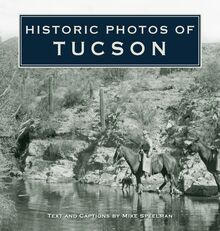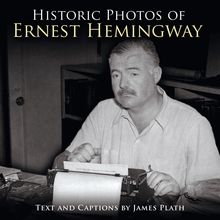Historic Photos of Ronald Reagan , livre ebook
198
pages
English
Ebooks
2008
Vous pourrez modifier la taille du texte de cet ouvrage
Obtenez un accès à la bibliothèque pour le consulter en ligne En savoir plus
Découvre YouScribe en t'inscrivant gratuitement
Découvre YouScribe en t'inscrivant gratuitement
198
pages
English
Ebooks
2008
Vous pourrez modifier la taille du texte de cet ouvrage
Obtenez un accès à la bibliothèque pour le consulter en ligne En savoir plus
Publié par
Date de parution
01 septembre 2008
Nombre de lectures
0
EAN13
9781618586766
Langue
English
Poids de l'ouvrage
7 Mo
Publié par
Date de parution
01 septembre 2008
Nombre de lectures
0
EAN13
9781618586766
Langue
English
Poids de l'ouvrage
7 Mo
HISTORIC PHOTOS OF
RONALD REAGAN
T EXT AND C APTIONS BY J AY S TEPHEN W HITNEY
Following a Cabinet meeting regarding the campaign against drug abuse, President Reagan explains to reporters that there is unanimous support to offer healing and treatment for drug users but stiff penalties for drug dealers. The exchanges between the President and ABC News hard-snooping reporter Sam Donaldson, seated at center opposite, were occasionally timeless. In one exchange, Donaldson had asked the president, Does any of the blame belong to you? to which Reagan famously quipped, Yes because for many years I was a Democrat.
HISTORIC PHOTOS OF
RONALD REAGAN
Turner Publishing Company
200 4th Avenue North Suite 950
Nashville, Tennessee 37219
(615) 255-2665
www.turnerpublishing.com
Historic Photos of Ronald Reagan
Copyright 2008 Turner Publishing Company
All rights reserved.
This book or any part thereof may not be reproduced or transmitted in any form or by any means, electronic or mechanical, including photocopying, recording, or by any information storage and retrieval system, without permission in writing from the publisher.
Library of Congress Control Number: 2008901862
ISBN-13: 978-1-59652-436-1
Printed in the United States of America
09 10 11 12 13 14 15-0 9 8 7 6 5 4 3
C ONTENTS
A CKNOWLEDGMENTS
P REFACE
F OREWORD
C HILDHOOD , C OLLEGE, AND R ADIO (1911-1937)
M OTION P ICTURES AND T ELEVISION (1937-1965)
T HE C ALIFORNIA G OVERNORSHIP (1966-1975)
C AMPAIGNING AND THE P RESIDENCY (1976-1989)
L EGACY (1989-)
N OTES ON THE P HOTOGRAPHS
R EFERENCES
I NDEX
This classic studio head shot, around 1942, was made while Reagan filmed his most important picture. Critics called Kings Row the best film of Reagan s acting career, and the actor agreed. He played the rakish cad, Drake McHugh, who suffers a double tragedy: losing his wealth and then both of his legs to a sadistic surgeon whose daughter was spurned by McHugh. When he awakens from surgery, McHugh shouts, Where s the rest of me? This iconic title appeared before the subtitle, The Ronald Reagan Story , of his 1965 autobiography.
A CKNOWLEDGMENTS
This book, Historic Photos of Ronald Reagan , is the result of the cooperation and efforts of many individuals, organizations, and corporations. It is with great thanks that we acknowledge the valuable contribution of the following for their generous support: the Acorn Newspapers, Pat Bagley, the Liberace Foundation for the Performing and Creative Arts, the Library of Congress, the National Archives, the Ronald Reagan Foundation, the Ronald Reagan Library, the United States Postal Service, and Don Wright.
Many thanks to the following for adding value to this volume and making it a reality:
The staff of Ronald Reagan Presidential Library and Museum, especially archivist Jenny Mandel, Steve Branch, and Kimberlee Lico; the staff of the Thousand Oaks Library; the staff of Turner Publishing, especially editor Steven Cox, and Michael McCalip, Mike Penticost, and publisher Todd Bottorff.
Individuals who contributed support, research, or photographs and deserve my gratitude are Francois Peloquin, Toby Brooks, Jessica Gordon, Professor Emeritus Bob Scheibel, Cathy J. Okrent, G. Goldberg, Jann Hendry, and Dr. Clifford Phillips, who taught me to appreciate history.
In Memoriam: Tim Russert
To Cathy, Diana, and Lisa for all their love and support
P REFACE
With the approaching centenary of his birth on February 6, 2011, how much do we readily recall of Ronald Wilson Reagan? Before he changed our nation and the world during his presidency, the 40th President was
-Nearly killed twice, first by viral pneumonia in 1947 and then by a bullet in 1981
-Divorced by his academy-award-winning wife in 1948 for extreme mental cruelty
-A New Deal Democrat who refused to campaign for John F. Kennedy in 1960
-Fired with little notice by his corporate sponsor General Electric in 1962
-Defeated by Richard M. Nixon for the 1968 Republican presidential nomination
-Passed over for vice-president in favor of Governor Nelson Rockefeller in 1974
-Defeated by Gerald R. Ford for the 1976 Republican presidential nomination.
Surprised that anyone could survive such controversy and adversity to win two decisive electoral mandates in 1980 and 1984? Relive or learn about the events that changed America and the world: nuclear arms negotiations with the Soviet Union, the Strategic Defense Initiative (S.D.I. or Star Wars ), income tax reductions, a massive defense build-up, the PATCO Air Traffic Controllers strike, an assassination attempt, historic Supreme Court nominations, the Grenada invasion, the Iran-Contra affair, and other highlights of Ronald Reagan s presidency. Be amazed with this collection of nearly 200 carefully researched photographs, political cartoons, and other newsworthy images, all captioned with facts not commonly remembered about the roles of Ronald Reagan, whether it be as a lifeguard, student-athlete, sportscaster, Hollywood star, union president, corporate spokesman, father, husband, California governor, or President of the United States of America. From the history buff to the novice reader, all will enjoy this historical reference. Photos abound of 1980s icons who visited the White House-Princess Diana, hockey s Wayne Gretzky, basketball s Kareem Abdul-Jabar, baseball s Roger Clemens, Don Baylor, and Joe DiMaggio, football s Rick Sanders, and Mother Teresa. Meetings with Pope John Paul II and Queen Elizabeth II appear as well. Ronald and Nancy Reagan brought Hollywood glamour to Washington and the A-listers they knew appear throughout the book. Spot Frank Sinatra, Jane Wyman, Bill Holden, Liberace, Marilyn Monroe, Audrey Hepburn, Sylvester Stallone, Arnold Schwarzenegger, Bob Hope, Ray Charles, Clint Eastwood, and others. Hollywood stills of Reagan movies and television shows are featured. While Ronald Reagan asserts in his autobiography Where s the Rest of Me? that American politics is a series of ups and downs, instead of left and right forces, the voices of liberals or conservatives resonate in nearly every caption. Pictured are Reagan s friends and adversaries including, among others, Barry Goldwater, Edward Brooke, Tip O Neill, Ted Kennedy, George H. W. Bush, Bill and Hillary Clinton, Richard Nixon, Colin Powell, Lyn Nofziger, George Schultz, George and Laura Bush, Spiro Agnew, Oliver North, Robert Bork, Jerry Ford, Jimmy Carter, Margaret Thatcher, Caspar Weinberger, Bob Dole, Don Regan, Deng Xiaoping, Mikhail and Raisa Gorbachev, Walter Mondale, William F. Buckley, Jr., James Baker, Howard Baker, John and Cindy McCain, Helen Thomas, Mike Wallace, and Sam Donaldson. Captions echo Reagan s view of the world and how he was viewed by others-placing each event in historical context.
Captions and photos illustrate how Ronald Reagan s actions and decisions made him the most influential president of the last quarter century and one who still influences the current political actors in the twenty-first century. Reagan understood that he had an important legacy and that his presidency was more than two blocks of four-year periods in succession. Ideally this pictorial reference will settle many friendly political arguments with its facts and photos.
- Jay Whitney
President Reagan is shown working at his desk in the Oval Office just days into his administration in January 1981.
F OREWORD
What is it about the photos of Ronald Reagan? He no doubt was what one would call photogenic. Actors know to make the camera their friend. It s a consciousness of the camera-knowing where it is at all times. Is the light hitting me just right? How s the angle? It s 90 degrees in here under the lights and if I sweat, the shot will be ruined. Yes I can do that take again. It s about poise and control.
It wasn t just that Reagan had an actor s skill; there was something more. He looked like the quintessential American male. When he smiled, he had a squint. It s a squint we see in so many characters in Western movies. His posture was near perfect-upright but never artificial. No one ever had to tell him, Mr. President, straighten up. For years people would claim Ronald Reagan dyed his hair. There is no evidence of that-he had a distinctive pompadour, which we see in so many of the caricatures of him. His hair conveyed health and well-being.
There was a natural quality to him. People felt it. It wasn t just what he said, it was the way he looked. He could tilt his head in a way that was the perfect visual expression of thought. Well he would begin. Where did he get that oh shucks gesture? Was it staged in some early film or did it come naturally? Even the early studio publicity photos of Reagan were different. He was the guy from the prairie town, the guy who ran the grocery store, the local loan officer in a small town bank, the former high school football star, the brother who went to war. You can see why they called him Ronnie. What was that look?
Theodore Roosevelt, modern to the core, had the same charismatic look and was master of the photo-op. FDR offered a grin, always a grin, but posed before the camera. Hiding his paralysis made him a bit too guarded and he always looked so tired. For Nixon, the camera was the enemy. What was hiding beneath that five o clock shadow? Truman, on the cusp of the television era, was great off the cuff but found it nearly impossible to read a speech well, his face buried in the copy. Eisenhower had a great smile but something about him connoted distance.
But Reagan and the camera-what a match!
- Charlie Maday, Vice-President of Programming, History.com
Ending his term triumphant, owing in part to Mikhail Gorbachev s reforms, Reagan laid claim to victory in the Cold War. A new era of peaceful coexistence emerged during the transition to the Bush administration.
C HILDHOOD , C OLLEGE, AND R ADIO
(1911-1937)
Ronald Wilson Reagan was born a decade before the formation of the Soviet U














